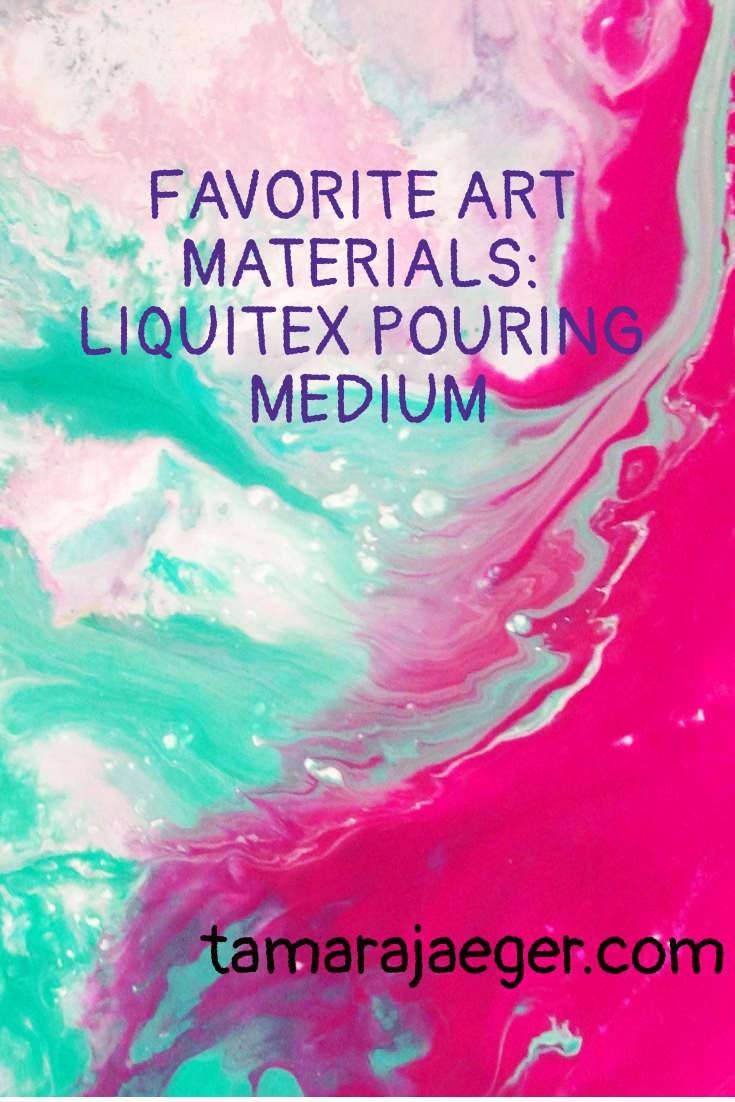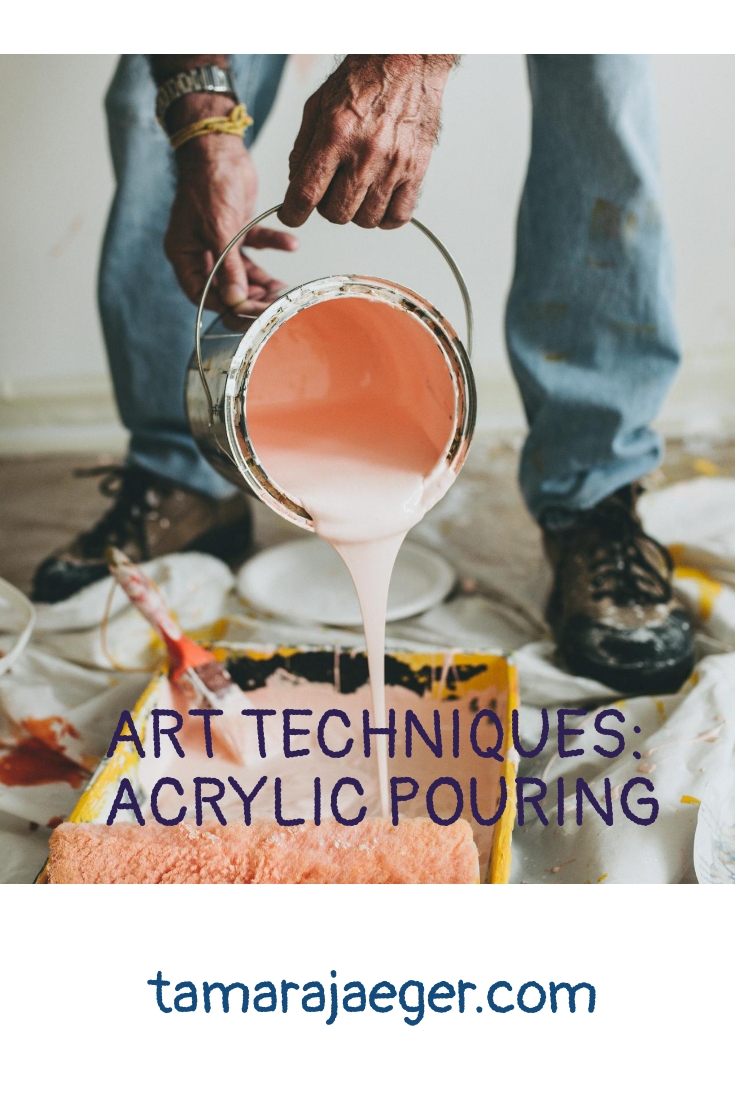Posts Tagged: mixed media acrylic


Favorite Art Materials: Liquitex Acrylic Pouring Medium
I talked about acrylic pouring last week and in that post, I mentioned one of my current favorite art materials: Liquitex Pouring Medium . I thought for today’s post I would expand on that a bit. I really (really!) like this stuff and I go through a shockingly large amount of it when I’m working on abstract pieces. It’s super satisfying, the way the paint mixes and flows when this medium is mixed in.
Pouring mediums dilute the paint to make it more fluid while retaining the color and binding properties of the undiluted paint. It also helps to prevent cracking and crazing of the thinned paint. Liquitex does warn that cracking and crazing can occur “when flow heights are very uneven” and they recommend that your poured surface is kept level as it dries. But I’ve never personally experienced and cracking and my poured surfaces are frequently Very unlevel!
The amount of paint versus pouring medium depends on the consistency of the paint you are using, but you typically don’t need a lot of paint to get a good, intense color. I just add some paint to a cup or container (I find the single-serve yogurt containers work well), then squeeze in some pouring medium and stir it gently. If it’s not fluid enough, I continue adding pouring medium until I get the consistency I want. Super easy and it’s very forgiving of the paint-to-medium ratio. I’ve honestly never had a mixture fail or cause any issues, and I’m definitely not at all precise in measuring (“Yeah, that looks good enough”).

As far as working with the mixed and thinned paint, I’ve used in with wet-on-wet layers and wet-on-dry layers on a flat surface as well as wet-on-wet pouring in drips and drops and streams all over some highly uneven surfaces. You can obtain a wide range of effects depending on how you apply it. I like pouring it in thin streams along the high points of my abstract pieces and allowing it to pool in the lower areas. Tilting and rotating the canvas allows the colors to mix and swirl in interesting and unpredictable ways. I used this particular technique in many of the pieces in my “Elementals” series.

Have you tried Liquitex Pouring Medium? What did you think? Have you tried any other types of pouring mediums? Tell me in the comments.
* Please note that this post contains affiliate links and any sales made through such links will reward me a small commission – at no extra cost for you.


Art Techniques: Acrylic Pouring
I use poured acrylic paint in a lot of my abstract pieces so probably my favorite art material in those situations is Liquitex Pouring Medium .

Pouring mediums dilute the paint to make it more fluid while retaining the color and binding properties of the undiluted paint. Sure, you can thin your paint with water, but that typically leads to dull, flat, washed-out colors with a chalky surface that doesn’t stick well to surfaces. Pouring medium also helps to prevent the poured paint from cracking.
There are dozens of methods of acrylic pouring—a quick google search will give you a good idea of the huge range of effects that can be achieved. I’ve only tried it out in a few types of situations, though it’s on my list to do some more experimenting. The process is fun and the results are somewhat unpredictable!

I like to mix up a color and add in the pouring medium until it reaches a good flowing consistency. You can add quite a bit before the colors start to get diluted, I’ve found. And sometimes that’s even an effect I’m looking for. The diluted paint dries to a smooth, glossy surface.
I typically pour the mixed color onto the piece I’m working on and then mix up another color (and sometimes more!), pouring that one on top of the still-wet layer(s) below it. After I get the wet paint poured onto the substrate, I’ll then tilt the piece to allow the paints to run and blend. Changing the direction and angle of the piece causes the paints to run and mix in quite fascinating ways. You can also add multiple colors of diluted paint to a container and (without mixing!) pour them onto the substrate for a different type of mixing or blending effect.
I’ve tried pouring the paints onto a panel with a lip to contain the paint, and that works really well for flat pieces. More often, however, I use poured acrylic as a way to add color and patterns to my 3-D mixed media pieces, where the paint is poured over a highly textured, uneven surface. It runs down the sides of the peaks and pools in the valleys and crevices. I used the technique in many of the pieces in my “Elementals” series. It also gave quite a nice effect when poured over crushed glass in several of my “Below the Surface” geologically-inspired pieces.

Have you tried acrylic pouring? What is your favorite technique? Tell me in the comments.
*Please note that this post contains affiliate links and any sales made through such links will reward me a small commission – at no extra cost for you.
